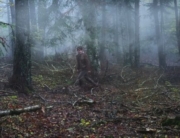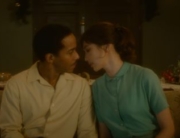![]() I was late to the party with director Hirokazu Kore-eda. Though he’s been making films since the mid-1990s, I hadn’t seen one until 2018’s Shoplifters. In that film, I discovered a filmmaker who is adept at realistic depictions of human behavior, alive to the grotesque aspects of modern life, interested in those who live on the margins, and, perhaps most surprisingly, slippery in presentation. Shoplifters presents a group of people that at first appear to be a family. As the plot unfolds, the rug is repeatedly pulled out from under the viewers’ feet as they come to realize the ways in which this is both true and false. Monster, his latest effort, is at once part of a loose group of films which explore the limits of what we can truly know about a given situation (Anatomy of a Fall, Saint Omer, May December), and very much its own film.
I was late to the party with director Hirokazu Kore-eda. Though he’s been making films since the mid-1990s, I hadn’t seen one until 2018’s Shoplifters. In that film, I discovered a filmmaker who is adept at realistic depictions of human behavior, alive to the grotesque aspects of modern life, interested in those who live on the margins, and, perhaps most surprisingly, slippery in presentation. Shoplifters presents a group of people that at first appear to be a family. As the plot unfolds, the rug is repeatedly pulled out from under the viewers’ feet as they come to realize the ways in which this is both true and false. Monster, his latest effort, is at once part of a loose group of films which explore the limits of what we can truly know about a given situation (Anatomy of a Fall, Saint Omer, May December), and very much its own film.
It begins with a building catching on fire. Saori (Sakura Ando) and her fifth-grade son, Minato (Soya Kurokawa), watch from the balcony of their home. Saori works at a laundromat, has a cheerful and warm manner that seems to conceal a deep well of anxiety, and is dedicated to the care of her son. Yet he has been behaving strangely, asking odd questions (Is it possible to put a pig’s brain in a human body?), has been sneaking off to an abandoned tunnel, and jumps out the door of a moving car during a seemingly innocuous conversation. When he comes home from school with bruises, his mother demands answers. He claims his teacher, Mr. Hori (Eita Nagayama), has been hitting him.
Saori is determined to get justice for her son, but her meetings with the school lead only to frustration. The principle is almost surreally silent on the subject, repeating a series of stock phrases back to Saori, and her manner is mimicked by the other teachers in the meeting, Hori included. However, the teacher lets slip that he believes Minato is bullying fellow student Yori (Hinata Hiiragi). When Saori seeks out Yori, she comes up with no answers except that, apparently, he and Minato are friends. This thread, and this point of view, would satisfy other filmmakers, and yet, as soon as Minato runs away in the middle of a typhoon, Kore-eda backpedals to the fire at the beginning, and we experience the story from a different perspective. It is not the last time this device is used.
In this scenario, a web of lies, half-understood truths, and incidents are suppressed, or not fully reported, for fear of how details will be interpreted. The damage lies can do, also the reasons one might have for telling them, are explored, and the fear and childishness of adults is juxtaposed with that of children. No one is fully in control.
This is a film of tremendous unease that adults experience on behalf of children and children experience between themselves. “Who is the real monster?” is the chant that Minato and Yori repeat to each other, and there are only a few definite answers. Minato and Yori are also deeply preoccupied with the concept of rebirth, and it is hard to tell, perhaps even for them, if this is an optimistic or pessimistic preoccupation. At one point, when they set fire to a decaying animal corpse in the woods, Yori casually asks if the fire will burn like the ones in California. The natural world (the overgrowth near train tracks, the water, the storms) are of tremendous symbolic significance, and sometimes filmed in an almost otherworldly light, a contrast to the realistic interiors and exteriors of the city. It is Kore-eda’s achievement to have woven all these concerns believably and with an unforced hand.
The third act is surprising enough that in some ways it feels like part of a different movie, and there were times that I wondered if Kore-eda had lost sight of the concerns of the first two thirds, or if he had yielded to sentimentality. He may have, at least for my taste. Yet the mix of tones also feels right for a story that is so much about deception, and Kore-eda keeps sentimentality at bay with some ambiguous turns of the plot. The result is moving and perplexing.

















Leave A Comment